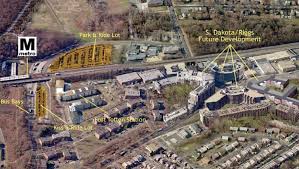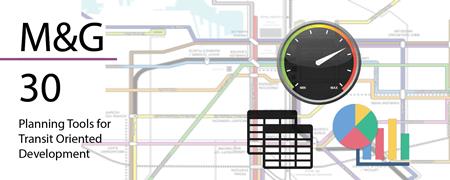 The Washington Metropolitan Area Transit Authority (WMATA) is a pioneer among transit agencies for its success in developing land holdings through a joint development program, a form of Transit Oriented Development (TOD). As the most active joint development program in the nation, it captures the value of transit investment through air rights and ground leases or sale and charging station connection fees to joint development projects to support WMATA’s operations. In addition, the program benefits WMATA and the region by increasing ridership, creating new housing and businesses resulting from TOD, and generates new state and local taxes on formally undeveloped and tax-exempt land.
The Washington Metropolitan Area Transit Authority (WMATA) is a pioneer among transit agencies for its success in developing land holdings through a joint development program, a form of Transit Oriented Development (TOD). As the most active joint development program in the nation, it captures the value of transit investment through air rights and ground leases or sale and charging station connection fees to joint development projects to support WMATA’s operations. In addition, the program benefits WMATA and the region by increasing ridership, creating new housing and businesses resulting from TOD, and generates new state and local taxes on formally undeveloped and tax-exempt land.
A great deal of WMATA’s success pursuing joint development is due to an in-house real estate development department that pursues an entrepreneurial approach to land development. In its early days, the agency used the financial resources to purchase large amounts of land around planned rail stations at relatively low prices. Later, the agency began using the landholdings for joint developments.
Development sites are selected according to a set of criteria that gauge the potential for real estate development sent through an RFP process to solicit developer interest. Following a series of negotiations with interested developers, a team is chosen and contracts specifying the financial terms of the deal are developed.
The agency’s joint development strategy has evolved over the past several decades. Since it established the first joint development policies and guidelines in 1980, WMATA has subsequently updated their policies and guidelines multiple times. Today, all joint development activities are guided by and managed in accordance with
FTA guidelines,
WMATA’s 2018 Joint Development Policies,
2020 Joint Development Guideline,
2020 Station Area Planning Guidelines, and the key overarching principles including:
- Maintaining or growing transit ridership and enhancing customer safety and/or access
- Maintaining or enhancing WMATA’s ability to operate transit services
- Increasing farebox revenue, real estate proceeds, and other sources of revenue
- Mitigating financial risk to WMATA
- Encouraging high-quality design that connects to the surrounding neighborhoods and communities
- Supporting or enhancing local economic development goals
Joint development projects are proposed, evaluated, and approved through the process and criteria defined in their current guidelines or developed based on the policies and principles. As noted by WMATA, FTA’s Joint Development Circular C 7050.1B (amended in August 2020) provides further guidance on how FTA-funded real property can be used for joint development, which includes most of WMATA’s property.
In 2022, WMATA released its first ever 10-Year Strategic Plan for Joint Development, a detailed roadmap to increase and prioritize joint development opportunities in WMATA’s 40 transit station areas across the region based on their: (a) Market Readiness, (b) Infrastructure Costs, and (c) Development Potential. The plan establishes a goal to complete 20 new joint development agreements by 2032 through the strategic framework that strengthens coordination with local jurisdictions and streamlines processes for private development partners.
In addition to a series of joint development guidelines, policies, and plans, WMATA developed analytical tools to support its TOD efforts such as the Station Walkshed Area Ridership Model and the Smart TOD Portal.
